How To Register and Incorporate Company In the USA From Mexico? 2025

Marketers can enhance their online store metrics by focusing on key performance indicators, consistently tracking and measuring performance, and utilizing effective tools for analysis. This approach ensures that they can make informed decisions and drive business growth.
What Are The Key Metrics To Focus On?
Marketers should prioritize several key metrics to effectively improve their online store performance. These include:
- Conversion Rate: Measures the percentage of visitors who complete a desired action, like purchasing a product.
- Average Order Value: Calculates the average amount spent each time a customer places an order.
- Customer Acquisition Cost: The cost of acquiring a new customer, essential for budget planning.
- Cart Abandonment Rate: Tracks the percentage of visitors who add items to their cart but do not complete the purchase.
- Traffic Sources: Analyzes where the traffic to the site comes from, providing insights into which channels are most effective.
These metrics are integral for monitoring ecommerce performance.
How To Track And Measure Performance?
Tracking and measuring performance involves using various tools and techniques to capture accurate data.
Firstly, marketers should set up Google Analytics to monitor traffic sources, user behavior, and conversion rates. This tool helps identify which marketing strategies are most effective.
Secondly, heatmaps can be utilized to visualize how users interact with the website. This shows where customers are clicking, which can highlight the usability of the website's design.
Lastly, A/B testing allows marketers to test different versions of a webpage or email to see which performs better. This helps in understanding consumer preferences and refining marketing tactics.
For a comprehensive analysis, employing these methods can significantly enhance online store metrics.
What Tools Are Available For Analysis?
Several tools are available to help marketers analyze and improve their online store metrics.
Google Analytics is one of the most widely used tools. It provides a detailed breakdown of traffic sources, user behavior, and conversion tracking.
Shopify Analytics offers valuable insights specifically tailored for eCommerce. Marketers can access metrics like conversion rates, average order value, and more.
AgencyAnalytics is another great tool, providing a dashboard to monitor multiple metrics in one place.
Utilizing these tools, marketers can gather essential data to make informed decisions and boost their online store's performance. Detailed guides on tools like Shopify Analytics can be very helpful for beginners.
What Are The Best Strategies For Improving Conversion Rates?
Boosting conversion rates is crucial for any online business. Key strategies include optimizing product pages and using effective call-to-action techniques to drive more conversions.
How To Optimize Product Pages?
Optimizing product pages can significantly enhance user experience and conversion rates. First, ensure high-quality images and detailed descriptions are present. Clear, zoomable photos from multiple angles help customers make informed decisions.
Next, provide comprehensive and easy-to-read product descriptions highlighting benefits and key features. Include relevant keywords to improve search engine visibility. Use bullet points for readability and add specifications, dimensions, and customer reviews for social proof.
Lastly, make navigation smooth with a clean layout and fast loading times. A seamless checkout process with minimal steps encourages users to complete their purchase. For example, see the best conversion rate optimization strategies.
What Are Effective Call-To-Action Techniques?
Effective call-to-action (CTA) techniques guide users towards completing desired actions. Use clear, concise language in your CTAs, such as "Buy Now," "Sign Up," or "Learn More." Position these buttons prominently on your web pages.
Experiment with colors and sizes for CTA buttons to see what works best. A/B testing can help identify the most effective combinations. Ensure CTAs stand out visually but still align with your website’s overall design.
Personalization enhances CTA effectiveness. Tailor messages based on user behavior or preferences, such as "Continue Shopping" or "Exclusive Offer for You." Incorporate live chat for real-time assistance, which can significantly improve user engagement and conversions. Learn more about effective call-to-action techniques.
How To Increase Customer Engagement?
Customer engagement is vital for retaining current clients and attracting new ones. The most engaging content connects with the audience's interests, social media can amplify your reach, and email marketing keeps your brand in mind.
What Types Of Content Are Most Engaging?
Creating engaging content starts with understanding your audience. Visual content like infographics and videos are highly effective because they are easy to digest and share. For example, brands that use personalized video messages see higher engagement rates.
Interactive content such as polls, quizzes, and live events also captivate audiences. Consistency matters too. Regular blog posts or updates help maintain interest and keep customers returning.
How To Leverage Social Media?
Social media platforms are powerful tools for boosting customer engagement. First, identify where your audience spends their time—be it Instagram, Facebook, or LinkedIn. Tailor your content to fit the platform. For instance, Instagram Stories and reels are great for quick, engaging updates, while LinkedIn is more suited for professional, informative posts.
Additionally, user-generated content can amplify your reach. Encourage customers to share their experiences with your products and share those testimonials on your profiles. Running contests or promotions can also attract attention and encourage interaction.
What Role Does Email Marketing Play?
Email marketing remains a robust method for engaging customers. Personalized emails, catering to individual preferences and behaviors, see higher open rates. Segmentation is crucial—group your email list based on demographics or purchase history to tailor messages effectively.
Automated email workflows, such as welcome sequences and birthday discounts, keep your brand at the forefront of the customer’s mind. Regular newsletters update customers about new products, offers, and company news, maintaining ongoing engagement. An email marketing strategy can significantly enhance customer relationships.
What Are The Benefits Of Personalization?
Personalization can significantly enhance customer experience and boost engagement. It delivers tailored content and recommendations, resulting in increased satisfaction and higher conversion rates.
How To Implement Personalization?
To implement personalization, start by understanding your audience. Collect data on customer preferences, behaviors, and demographics. Use this data to create detailed customer profiles. Segmentation is key; divide your audience into different groups based on various attributes like age, location, and purchase history.
Next, use personalized messaging across different channels. For emails, address recipients by name and tailor content to their interests. On websites, use dynamic content that changes based on the user's behavior. For instance, show product recommendations based on past purchases.
Regularly test and refine your strategies. A/B testing can help determine what personalization tactics work best. Monitor the results and adapt your methods accordingly to continually improve your personalization efforts.
You can learn more about effective strategies for marketing personalization by checking this guide to marketing personalization.
What Tools Aid In Personalization Efforts?
Several tools can aid in personalization efforts. Customer Relationship Management (CRM) systems like Salesforce and HubSpot store and analyze customer data to help you create targeted marketing campaigns.
Marketing automation platforms such as Marketo and Mailchimp enable automated, personalized email campaigns. These platforms can tailor messages based on customer behaviors and preferences, ensuring that each message is relevant to the recipient.
Website personalization tools like Optimizely and Adobe Experience Cloud allow businesses to customize website content for different user segments. These tools use data such as browsing history and behavior to deliver a personalized browsing experience.
For more insights on how to effectively use these tools, visit What is Personalization and How to Use It in Marketing.
How Can Ecommerce Managers Optimize SEO?
For ecommerce managers, optimizing SEO focuses on best practices like effective keyword use and backlink importance. The goal is to increase visibility and drive more traffic to product pages.
What Are The Best Practices For SEO?
Ecommerce websites should prioritize user experience and site structure. This involves ensuring fast loading times, mobile optimization, and easy navigation. Pages should be designed intuitively, with clear product categories and search functionalities. Prioritize content quality by using unique product descriptions and high-quality images.
Additionally, use internal linking to direct users to relevant products or categories. Implementing HTTPS for secure browsing can also positively impact rankings. Regularly update content to keep it fresh and aligned with current trends.
For an in-depth guide, refer to the comprehensive strategies outlined in this SEO guide for ecommerce websites.
How To Utilize Keywords Effectively?
Keyword research is critical. Start by identifying keywords with high search volume and relevance to your products. Use tools like Google Keyword Planner, SEMrush, or Ahrefs to find potential keywords. Incorporate these keywords organically into product titles, descriptions, and meta tags.
Avoid keyword stuffing as it can harm ranking. Focus on long-tail keywords, which are specific and likely to convert better. For example, instead of just "shoes," use “women’s running shoes.”
Regularly analyze keyword performance and adjust strategies based on what words your audience uses. Learn more about detailed keyword research methods on this page.
What Is The Importance Of Backlinks?
Backlinks from reputable sites signal to search engines that your site is credible. Aim to get backlinks from industry-specific blogs, news sites, and influencers. High-quality backlinks can significantly boost your rankings and increase trustworthiness.
Engage in guest posting, collaborate with bloggers for reviews, and share content that others want to link to. Always ensure that the backlinks come from diverse and authoritative domains. Avoid spammy or low-quality backlinks, as these can negatively affect your site’s reputation.
For a deeper dive into effective backlink strategies, check out Neil Patel’s insights on SEO for e-commerce websites.
How To Enhance The User Experience?
Optimizing user experience involves attention to visual design, site performance, and user engagement. This section covers key elements of a good UI/UX and methods to improve site speed.
What Are The Key Elements Of A Good UI/UX?
A good UI/UX design focuses on usability, consistency, and accessibility. The design should be intuitive, allowing users to navigate easily. Elements such as clear typography, adequate spacing, and contrast help in readability and user focus. Consistent design elements across the site ensure a cohesive look and feel, which reduces the learning curve.
Navigation menus should be well-organized and visible. Use visual hierarchy to guide the user's attention to essential tasks and information. Moreover, responsive design ensures that the experience is seamless across various devices.
Incorporating user feedback is crucial. Conduct user testing to gather insights and adjust the design accordingly. For more detailed guidelines, refer to 10 UX Best Practices.
How To Improve Site Speed?
Fast load times are critical for keeping users engaged. One of the first steps is to optimize images by using appropriate formats like JPEG for photos and PNG for graphics. Tools for compressing images without losing quality can be beneficial.
Minimize the use of heavy scripts and ensure that your CSS and JavaScript are optimized. Using a Content Delivery Network (CDN) can also distribute the load efficiently, thus speeding up the site. For instance, incorporating caching techniques helps in quicker data retrieval.
Regularly test your site’s speed using tools like Google PageSpeed Insights. This tool provides suggestions for improvement that can directly impact performance. More insights can be found in this User Experience Optimization Guide.
What Are The Latest Trends In Ecommerce?
Ecommerce is evolving rapidly with several key trends shaping the industry. Businesses must focus on emerging technologies and modern customer engagement strategies to stay competitive.
How To Stay Updated With Industry Changes?
To keep up with ecommerce trends in 2024, businesses need to actively monitor industry news and updates. Subscribing to top industry blogs and newsletters is a good strategy. Blogs like HubSpot and Sprout Social offer comprehensive insights into the latest trends.
Joining industry-specific forums and attending webinars can also provide valuable information. Social media platforms, especially LinkedIn and Twitter, are excellent for following thought leaders and industry experts. These actions ensure you stay ahead in the fast-paced ecommerce landscape.
What Are The Emerging Technologies?
Artificial intelligence (AI) and augmented reality (AR) are leading the charge in emerging ecommerce technologies. AI helps in personalizing customer experiences by analyzing data and predicting customer behavior. This technology is crucial for product recommendations and customer support.
AR offers a unique way for customers to interact with products online. For instance, brands can use AR to let customers visualize how products would look in real life. Voice search is another innovation making waves, with more shoppers using devices like Alexa and Google Assistant to make purchases.
Adopting these technologies not only improves customer experience but also gives businesses a competitive edge. Implementing AI for personalization and AR for interactive shopping can significantly boost engagement and sales.
Frequently Asked Questions
Understanding how to register and incorporate a business in the USA from Mexico involves navigating multiple steps. These FAQs address common concerns related to the process, costs, and legal requirements.
What are the steps for a foreigner to legally establish a company in the United States?
Foreign entrepreneurs can start by selecting a business structure like an LLC or a C Corporation. Next, choose a state for incorporation, often Delaware or Wyoming. An Employer Identification Number (EIN) from the IRS is necessary for tax purposes. Finally, employ a registered agent and complete the incorporation paperwork with the chosen state.
Is it possible to register a U.S. company online, and if so, what is the process?
Yes, it is possible to register a U.S. company online. Services like Firstbase guide you through choosing a business name, filling out state-specific forms, and obtaining required documentation. It includes the step-by-step process from incorporation to obtaining an EIN and setting up a business bank account.
What is the process for creating an LLC in the United States as a non-resident?
To create an LLC, file the Articles of Organization with the Secretary of State of your chosen state. Next, obtain an EIN from the IRS. Establish a mailing address, preferably using a registered agent. Consider local laws, required licenses, and prepare an Operating Agreement which outlines the management structure of the LLC.
How can I verify the registration status of a company in the USA?
Verification of a company's registration status can be done through each state's Secretary of State website. You can search by business name to confirm details. For instance, California's Secretary of State site offers a business search tool to verify status, ownership, and compliance records.
What are the associated costs with registering a new company in the United States?
Costs vary by state and type of business. Incorporation fees in states like Delaware may range from $50 to $300. Additional costs include obtaining an EIN, registered agent services, and annual reporting fees. Legal fees and state-specific franchise taxes may also apply, along with fees for specific licenses and permits.
What requirements must be met to set up a US business entity from Mexico?
Requirements include selecting a business structure, filing incorporation documents with the chosen state, and obtaining an EIN from the IRS. Use a registered agent to meet state requirements. An Individual Taxpayer Identification Number (ITIN) is necessary for tax filing, especially if you plan to hire employees or open a US bank account. Register the business name and adhere to all state and federal regulations.
Up to 3,500 bonus and 3% cash-back on all card spend [3], 6 months off payroll, and 50% off bookkeeping for 6 months, free R&D credit.
Frequently Asked Questions
- How do I sign up for Every?
You can get started right away—just click “Get Started” and follow a short onboarding flow. Prefer a little help? One of our specialists can walk you through incorporation, banking, payroll, accounting, or whatever you need.
- What features does Every offer?
Every gives startups a complete back office in one platform. From incorporation and banking to payroll, bookkeeping, and tax filings, we take care of the operational heavy lifting—so you can spend more time building, less time managing.
- How is Every different from other tools?
Most competitors give you software. Every gives you a full-stack finance and HR team—plus smart financial tools that actually benefit founders. Earn up to 4.3% interest on idle cash and get cash back on every purchase made with your Every debit cards, routed straight back to you.
Every is not a bank. Banking services provided by Thread Bank, Member FDIC. Your deposits qualify for up to $3,000,000 in FDIC insurance coverage when Thread Bank places them at program banks in its deposit sweep program. Pass-through insurance coverage is subject to conditions. The Every Visa Business Debit Card is issued by Thread Bank, Member FDIC, pursuant to a license from Visa U.S.A. Inc. and may be used anywhere Visa cards are accepted.
- Is my data secure with Every?
We use end-to-end encryption, SOC 2-compliant infrastructure, and rigorous access controls to ensure your data is safe. Security isn’t a feature—it’s foundational.
Can I switch to Every if my company is already set up?Yes—you can switch to Every at any time, even if your company is already incorporated and running. Whether you're using separate tools for banking, payroll, bookkeeping, or taxes, we’ll help you bring everything into one place. Our onboarding specialists will guide you through the process, make sure your data is transferred cleanly, and get you set up quickly—without disrupting your operations. Most founders are fully transitioned within a week.
- What stage of startup is Every best for?
Every is designed for startups from day zero through Series A and beyond. Whether you're just incorporating or already running payroll and managing expenses, we meet you where you are. Early-stage founders use Every to get up and running fast—with banking, payroll, bookkeeping, and taxes all handled from day one. Growing teams love how Every scales with them, replacing patchwork tools and manual work with a clean, unified system.
We’re especially valuable for teams who want to move fast without hiring a full finance or HR team—giving founders more time to build, and fewer distractions from admin and compliance
- How long does onboarding take?
Onboarding with Every is fast and efficient. For most startups, the process typically takes between 3 to 7 days, depending on your specific needs and how much setup you already have in place.
If you're a new company, you'll be up and running quickly—getting your banking, payroll, and bookkeeping set up without hassle. If you’re transitioning from another system, our specialists will help you migrate your data, ensuring a smooth switch with no gaps or errors in your operations.
We guide you every step of the way, from incorporation to setting up automated payroll to handling your taxes—so you can focus on growing your business. Our goal is to make sure you're fully operational and confident in your back office in under a week.
Practical Questions to Ask to Ensure Your Bank is Well Managed
How much liquidity does the bank have on hand to cover unexpected withdrawals or shortfalls?
What percentage of the bank's deposits are invested in longer-term securities and loans, and what percentage is kept as cash reserves?
How does the bank diversify its investment portfolio to minimize potential losses and reduce risks?













